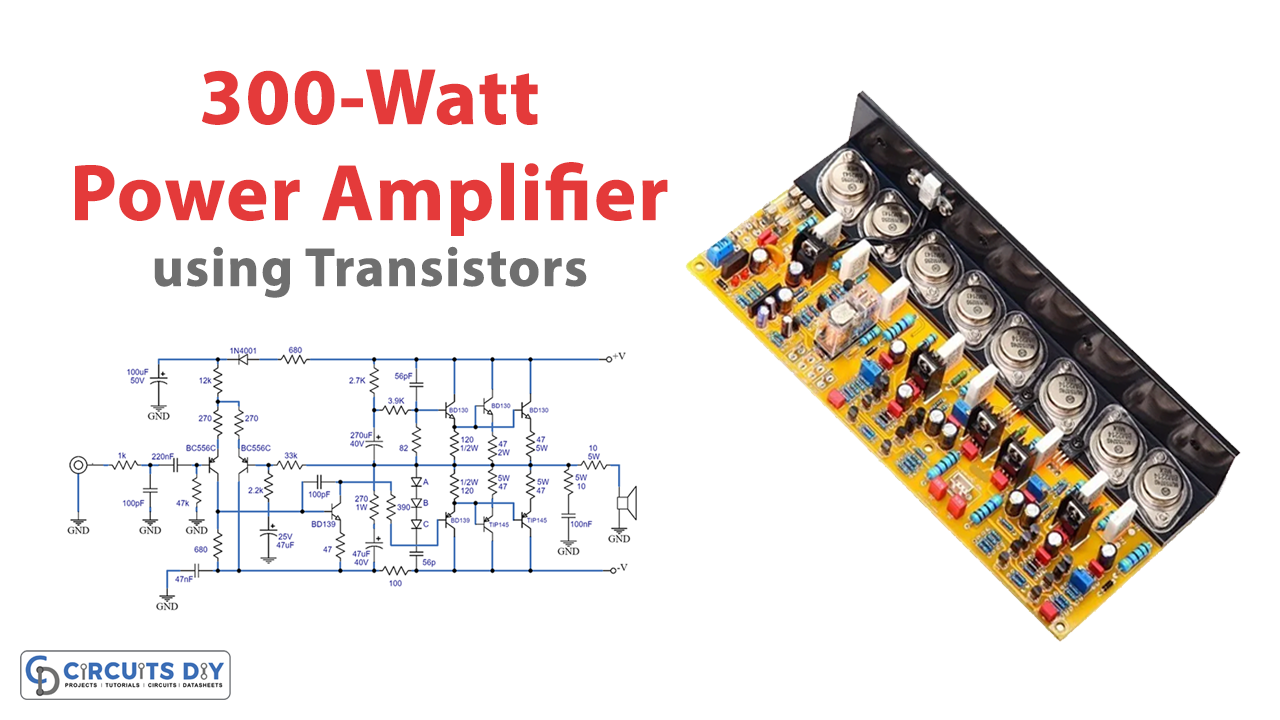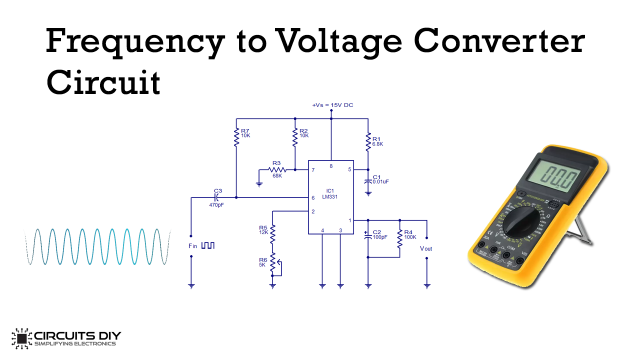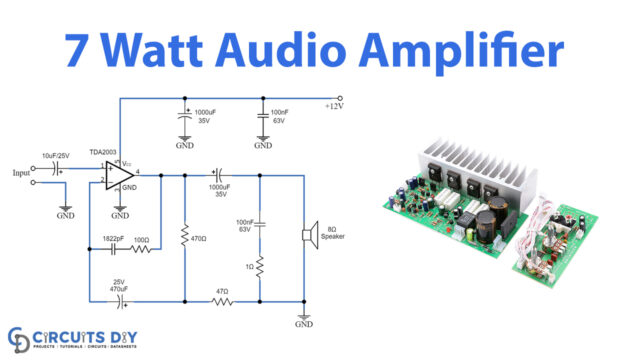Introduction
Are you ready to dive into the world of audio amplification and build your own 300-watt power amplifier circuit? This exciting project will allow you to explore the ins and outs of transistor-based amplification and experience the thrill of creating something with your own hands. This project is an excellent way to build your knowledge and skills.
With a few basic components, such as transistors, capacitors, and resistors, you’ll be able to assemble a powerful and efficient amplifier circuit. Not only will you be able to enjoy the audio sounds, but you’ll also have a newfound appreciation for the inner workings of electronics. So grab your tools, get your components ready, and let’s get started!
Hardware Required
You will require the following hardware for 300-watt Power Amplifier Circuit.
| S.no | Components | Value | QTY |
|---|---|---|---|
| 1 | Polar capacitor | 100uF, 47uF, 270uF, | 1, 2, 1 |
| 2 | Non polar capacitor | 220nF, 100pF, 47uF, 47,nF 56pF, 100nF | 1, 2, 1, 1, 1, 1 |
| 3 | Resistor | 10, 47, 82, 100, 120, 270, 330, 390, 680, 12k, 47k, 680, 2.2k, 33k, 2.7k, 3.9k | 2, 5, 1, 1, 2, 3, 1,1,1,1,1,1,1,1,1,1, |
| 4 | Diode | – | 3 |
| 5 | Transistor | BC556C, BD139, BD140, TIP140, TIP145 | 2, 2, 1, 2, 2 |
| 6 | Speaker | – | 1 |
Circuit Diagram

Circuit Explanation
Power Supply
The power supply is a critical component of the 300-watt power amplifier circuit. It should have a 45V output, with a current not exceeding 7 amps. The recommended specifications for the power supply are:
- A transformer that features a secondary portion and a socket that is centered 32-0-32.
- For a mono configuration, the transformer must have a current of 5A; for stereo 10A
- For mono, diodes need to be at least 100V and 8A, while for stereo, they need to be 100V and 16A.
- Capacitors must be 4700μF 63V each and should not have a voltage higher than 63V, as it could affect the working curve of the capacitor and affect the filtering performance.

Power Supply Filtering
The specified power supply must not be a complex stabilized power supply but must have adequate filtering. Using high-value filter capacitors will ensure that the power supply is adequately filtered.
Amplifier Input
The music that is supplied into the amplifier input has to be a standard line that is 1Vpp. In order to generate high power while maintaining Hi-Fi quality, the amplifier circuit makes use of complementary transistors.
Heat Sink
Most of the transistors in the circuit, except the BC556C, must be mounted on a heat sink for proper heat dissipation. The diodes marked A, B, and C (1N4007) must also be mounted on the heat sink with thermal grease. The heat sink should be fixed to one side of the cabinet to maximize heat dissipation.
Final Words
In conclusion, the 300-watt power amplifier circuit presented in this article is a simple and cost-effective solution to increase audio power. Hence, the circuit uses complementary transistors for high power output with Hi-Fi quality. The power supply specifications are adequately explained to ensure proper filtering and stability of the amplifier circuit.
We hope that you found this article helpful and informative. If you have any questions or feedback, please feel free to leave a comment. We would love to hear from you!













